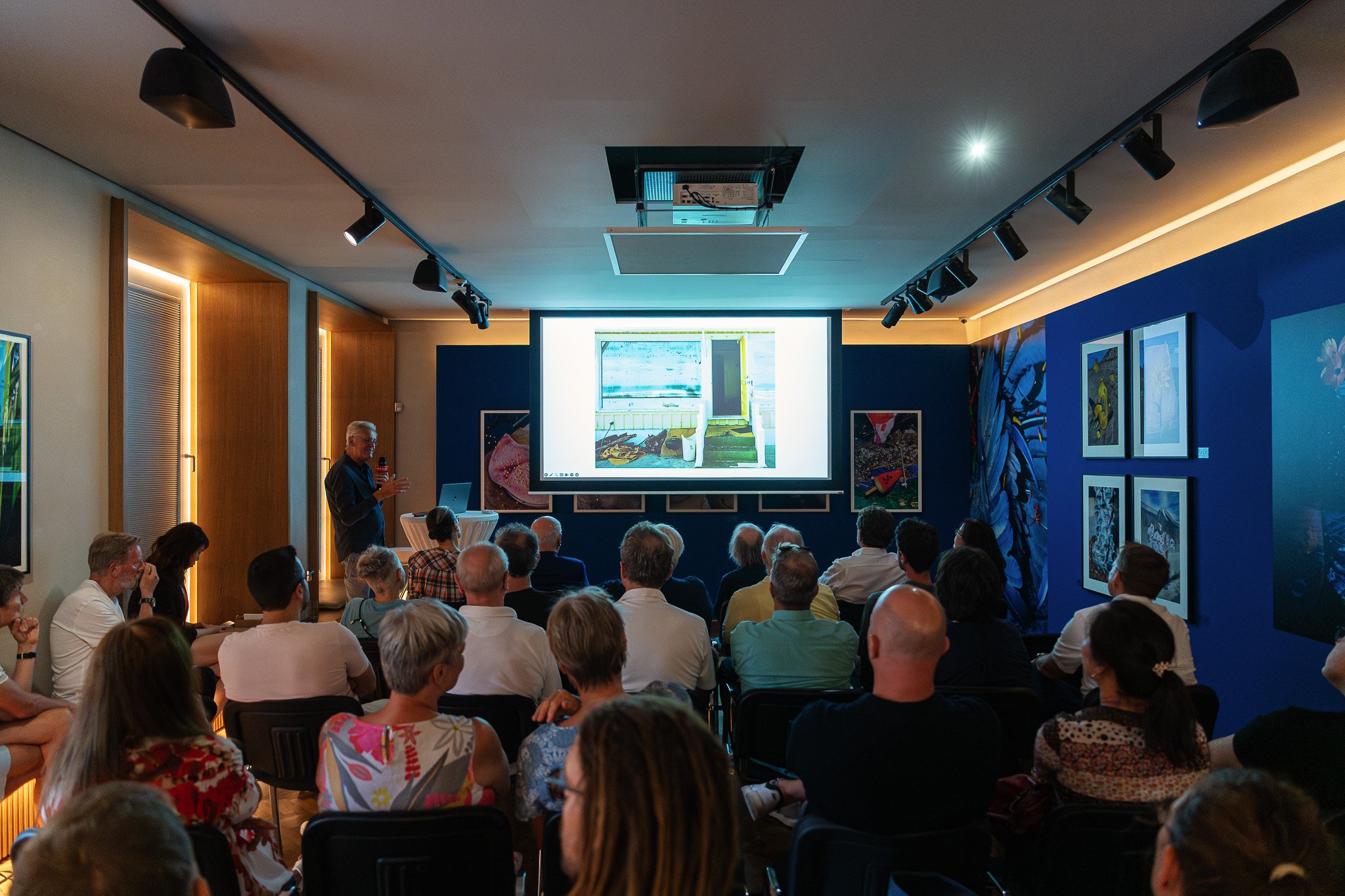Is Seiland the better Meyerowitz? … and why Seiland Deserves a Closer Look
Of course, this blog post title is clickbait — but hear me out. There are some compelling reasons one might (half-jokingly) ask whether Alfred Seiland could be considered the "better" Meyerowitz. Not necessarily in fame or legacy, but in terms of method, precision, and quiet photographic obsession.
More photos can be found on my Gallery-Website.
This thought was suggested by Lois Lammerhuber, the mastermind behind La Gacilly in Baden/Vienna when introducing Alfred Seiland at the Leica Gallery Vienna, where he presented his major series and shared a wealth of anecdotes and insights into how he works. It was a masterclass in patience, vision, and analog craftsmanship — a kind of photographic mindset that's increasingly rare in the digital age.
Photography as an Art Form: Go West (… and East)
Seiland began by explaining why he moved to the United States early in his career. Unlike in Europe at the time, photography was already established as a serious art form in the U.S. He wanted to be part of that world and moved to Dallas where one of the three major Art Galeries for Photography was located back then. He did not want to be a commercial photographer, but an artist working with light and time. The cultural validation he found there helped him develop his now unmistakable visual voice.
One Lens to Train the Eye
One surprising detail: For most of his work Seiland only uses a single lens. No zooms, no switching focal lengths. Why? Because fewer choices train the eye. You learn to see better, to compose better, to understand the frame with greater precision. It’s not a limitation — it’s a discipline. I think the results speak for them…
Why Color Negative Film?
Unlike many of his contemporaries, Seiland opted for color negative film over slides (diapositive). His reasoning? Color negative has vastly superior color reproduction and a broader dynamic range. This choice gives his photographs a richness and depth that digital edits can’t replicate easily — especially when paired with his own darkroom process.
Master of Composition and Timing
His images are, above all, immaculately composed. But the artistry doesn’t stop at framing. Seiland is deeply attuned to how weather and atmosphere affect color — though he’s quick to say he never photographs sunsets. His focus is on subtle color shifts and the kind of light that transforms the ordinary into something cinematic. For his photos, he is looking for weather conditions that have their own color and thus change the color of objects it hit (especially before and after sunset/-rise)
He often waits hours with his large-format camera already set up on a tripod, monitoring the scene until every element is just right. He never arranges props or people in a scene, but he does ask for patience — like when he convinces someone to leave their belongings in a shot for 30 more minutes so he can get the perfect frame.This relentlessness is not about control; it’s about waiting until reality gives him the composition he saw in his mind.
„“Ich arrangiere nicht, aber ich kämpfe um meine Bilder”“
Crafting Color in the Darkroom
Unlike most photographers today, Seiland developed and enlarges his prints in the darkroom: He never cares about the film he used - actually working with tungsten based film during daylight(!) and using color correction filters later in the darkroom to fine-tune the image. Over time, he’s developed a unique visual signature through this process — subtle colors that are a key ingredient of his work.
So… is Seiland the better Meyerowitz?
That’s not the point. But Seiland’s obsessive, slow, analog method (although he is using digital backs for his cameras today), his eye for light, structure, and quietness, earns him a place in the same conversation. Maybe not “better,” but certainly just as essential.
At least he has that many stories to tell that after well running over time a second talk was promised by Lois Lammerhuber - cant wait!
More photos can be found on my Gallery-Website.
These other blogposts might be of interest:























